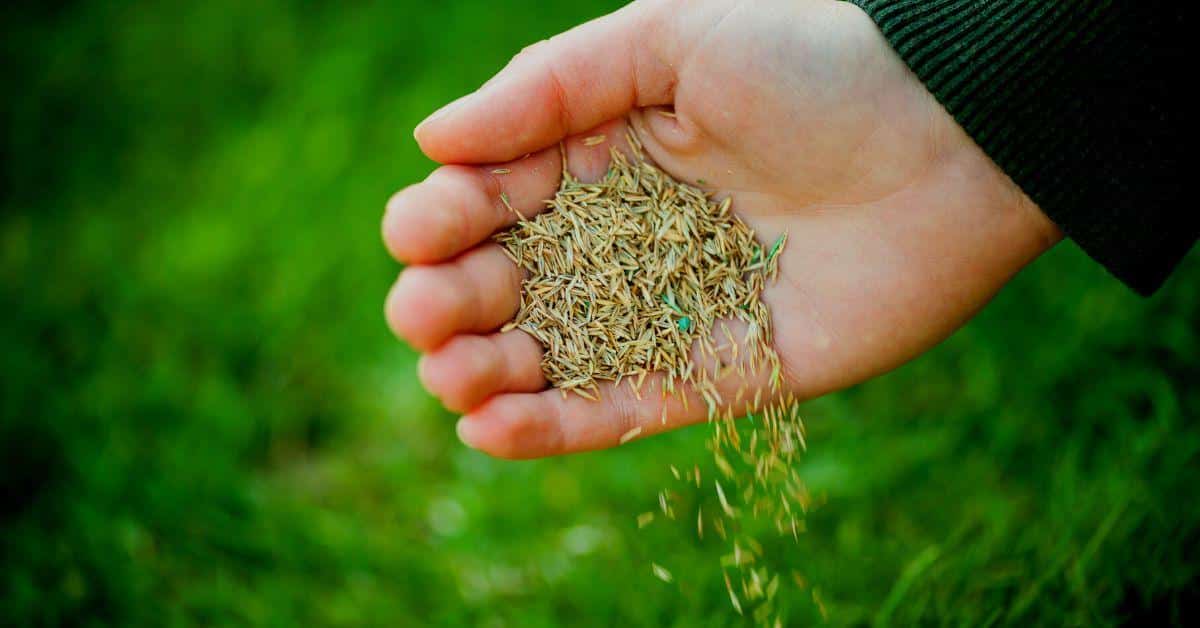Most Northeast Ohio lawns begin showing visible results from overseeding in 7 to 14 days, depending on grass type, soil temperature, and watering consistency. Full results can take 4 to 8 weeks, especially in cooler fall weather.
Introduction: The Waiting Game After Seeding
You’ve done the hard work—spread the seed, watered diligently, and stared at your lawn every morning hoping for signs of life.
But now you’re wondering: how long before I actually see new grass?
In Northeast Ohio, where fall brings cooler nights and variable moisture, understanding when and what to expect after overseeding is key to staying patient—and doing things right.
This article breaks down the full overseeding timeline, the factors that affect it, and how to know whether your seed is thriving or struggling.
Germination Timeline by Grass Type
Not all grass seed grows at the same pace. Here’s what to expect from the most common types used in Northeast Ohio overseeding blends:
| Grass Type | Days to Germinate | Best Use Case |
|---|---|---|
| Perennial Ryegrass | 5–10 days | Fast results, good for sun areas |
| Fine Fescue | 7–14 days | Shade-tolerant, low maintenance |
| Tall Fescue | 10–14 days | Durable, heat- and drought-tolerant |
| Kentucky Bluegrass | 14–21 days | Dense, lush look; slow to sprout |
Pro Tip: Most local seed mixes include a blend for staggered germination and balanced performance across different lawn zones.
Week-by-Week Overseeding Timeline
Here’s a realistic breakdown of what you’ll see after overseeding your lawn in late summer or early fall in Northeast Ohio:
📅 Week 1: Moisture Matters
-
No visible growth yet
-
Seeds need consistent moisture — light watering 2–3 times a day
-
Grass may swell or crack open underground, but it’s all happening below the surface
📅 Week 2: First Sprouts
-
Ryegrass and fescues begin sprouting if conditions are right
-
Small green hairs visible among existing grass
-
Avoid mowing unless absolutely necessary (wait until seedlings are at least 3″ tall)
📅 Week 3–4: Lawn Starts Filling In
-
Faster-growing grasses gain height
-
Thinner areas begin to blend better with existing lawn
-
Continue daily watering if rainfall is low (aim for 1″ of water per week total)
📅 Week 5–6: First Real Mow
-
New grass is tall enough to mow — use a sharp blade and high setting (3–3.5″)
-
Lawn looks 60–80% thicker
-
You can resume light traffic in the yard
📅 Week 7–8: Maturity and Blending
-
Kentucky Bluegrass finally fills in, blending seamlessly
-
You may still see unevenness, but growth will continue into fall
-
Apply a balanced fall fertilizer now if skipped earlier
Factors That Can Delay (or Speed Up) Results
Several local factors can make your grass grow faster or slower:
✅ Soil Temperature
-
Ideal germination happens when soil temps are between 55°F and 70°F
-
Cold nights in early October can slow growth — seed earlier for best results
✅ Watering Consistency
-
Missing even a few days of watering during early stages can kill germination
-
If rain is inconsistent, use a sprinkler system or hose timer to stay on track
✅ Seed-to-Soil Contact
-
Seeds that land on thatch, leaves, or debris won’t grow well
-
Core aeration or dethatching beforehand makes a huge difference
✅ Shade and Sunlight
-
Shaded areas take longer to grow and often require fine fescue
-
Sunny areas usually show growth faster — especially with rye or tall fescue
✅ Old Grass Competition
-
If existing grass is thick and wasn’t mowed low enough before seeding, it can shade out or crowd seedlings
-
Overseeding works best after a short mow and mechanical aeration
What If Nothing’s Growing Yet?
If it’s been more than 3 weeks and you’re seeing no sprouts, consider these troubleshooting tips:
-
Was the seed watered daily? Even short dry spells can prevent germination.
-
Did you mow too early or too short? That can scalp seedlings.
-
Was the seed quality good? Older seed or bargain-bin mixes often have poor germination rates.
-
Is the soil compacted or covered in thatch? Without good contact, even premium seed won’t grow.
-
Has it been cold at night (under 50°F soil temp)? Late-season seeding may delay germination until spring.
In many cases, it’s not a lost cause. Overseeded grass may still germinate slowly or even dormant seed over winter and pop in spring.
How to Know It’s Working
✅ You’ll see:
-
Fine green fuzz across bare areas
-
Gradual thickening, especially in open soil patches
-
Color changes in the turf as new seed mixes blend with old grass
🚫 You won’t see:
-
Perfect results in 1 week
-
Immediate weed suppression
-
Dramatic change without prep and watering
Patience Pays Off
If you keep watering, avoid heavy traffic, and hold off mowing too soon, overseeding can dramatically improve your lawn in 4 to 8 weeks.
In fact, many homeowners are surprised how well their lawn bounces back with just seed, water, and timing.
While it’s not as instant as sod, the long-term results — especially with repeat overseeding each fall — build a resilient, lush lawn suited to Northeast Ohio’s conditions.
FAQ: How Long Does Overseeding Take?
How soon can I mow after overseeding?
Wait until the new grass reaches 3 to 3.5 inches tall — usually about 3–4 weeks after seeding, depending on grass type and weather. The longer you wait, the more your roots can develop.
Will I see results faster if I use starter fertilizer?
Yes. A phosphorus-rich starter fertilizer can accelerate root development, leading to earlier visible results. Just follow label directions and avoid over-application.
Can I walk on the lawn after overseeding?
Avoid heavy traffic for 2–3 weeks, especially during germination. Use stepping stones or board paths if access is necessary.
What month is best to overseed in Northeast Ohio?
Mid-August through late September is ideal. Soil is still warm, but weed pressure is dropping, giving seed a better shot at success.
Can I overseed again next season if results are spotty?
Absolutely. Fall overseeding is often most effective when done 2 years in a row, especially on thin or compacted lawns.

